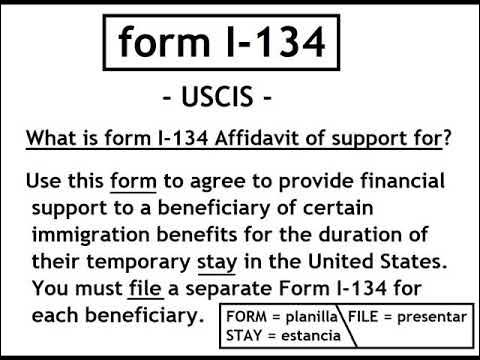Analysis of Non-Confirmed Notices from USCIS
Non-Confirmed Notices USCIS
Non-Confirmed Notices USCIS. The United States Citizenship and Immigration Services (USCIS) plays a critical role in processing immigration applications, including applications for visas, work permits, permanent residency, and citizenship. USCIS provides various forms of communication to applicants, including receipts of application, requests for evidence (RFE), and approval or denial notices. However, there are situations where applicants may receive a notice or notification from USCIS that is classified as “non-confirmed.” Understanding what a non-confirmed notice entails, and its implications can be challenging for applicants navigating the complex U.S. immigration system. This analysis explores the meaning of non-confirmed notices, their possible causes, and what applicants should do if they receive such a notice.
What is a Non-Confirmed Notice?
A “non-confirmed notice” from USCIS refers to communication where the validity or finality of the information is not officially verified by the agency. Unlike standard notices, which provide applicants with verified updates regarding their immigration status, non-confirmed notices may contain provisional or uncertain information that could change. These notices might indicate that further action is needed or that the information is still under review.
Non-Confirmed Notices USCIS
In practice, a non-confirmed notice could mean different things depending on the type of application in question and the specific circumstances. The notice could, for example, indicate that USCIS has received the applicant’s submission but still needs to verify details or require additional documentation. Alternatively, the notice might stem from a technical glitch in the system that has generated a non-final or inaccurate update to the applicant’s case status.
Causes of Non-Confirmed Notices
There are several reasons why an applicant may receive a non-confirmed notice from USCIS. These can range from minor clerical errors to systemic issues within the USCIS framework. The following are some common causes:
Incomplete Applications One of the most common reasons for receiving a non-confirmed notice is the submission of an incomplete application. USCIS may issue a notice acknowledging the receipt of the application but indicate that further documentation or information is required. In such cases, the notice could be non-confirmed because the agency has not yet made a final determination on the application’s completeness or validity.
Request for Evidence (RFE) If an application lacks sufficient supporting evidence, USCIS may issue a Request for Evidence (RFE), signaling that more documentation is needed to proceed with the application. In cases where an RFE is issued, the notice may remain in a non-confirmed state until the applicant submits the requested documents and the agency verifies them.
Technical Issues System errors or technical issues on USCIS’s online case status system can also lead to non-confirmed notices. In such cases, applicants might see contradictory or confusing messages when checking the status of their applications online. These glitches can cause applicants to receive non-confirmed notices where no clear action or outcome is specified, adding to the confusion.
Non-Confirmed Notices USCIS
Pending Internal Review Sometimes, a notice may be classified as non-confirmed due to internal delays or the need for further review within USCIS. For example, a case may require additional review by an adjudicator or a background check, and until those processes are completed, the notice remains non-confirmed.
Fraud Prevention or Security Checks USCIS conducts background checks and investigations for various applications to prevent fraud and ensure national security. If an application is flagged for further investigation, the issuance of a non-confirmed notice could indicate that the agency is awaiting the results of background checks or other security clearances.
Immigration Policy Changes in immigration laws or policies can affect how USCIS processes certain types of applications. If a notice is issued while policy updates are still being implemented or reviewed, the notice may remain non-confirmed until USCIS has clarified the impact of those changes on the applicant’s case.
The Impact of Receiving a Non-Confirmed Notice
Receiving a non-confirmed notice can be confusing and stressful for applicants, especially those unfamiliar with the USCIS process. Some of the key impacts include:
Uncertainty and Delay. A non-confirmed notice usually means that the applicant will have to wait longer for a final decision on their case. This can cause frustration and anxiety. Particularly for individuals awaiting work permits, green cards, or travel documents. That are crucial to their legal status in the United States.
Risk of Missing Deadlines. In some cases, applicants may receive a non-confirmed notice that requires further action. Such as submitting additional documents or clarifying information. If the applicant fails to respond in a timely manner, they risk having their application denied or delayed further. Therefore, it is essential to follow up on any non-confirmed notices promptly.
Complications in Legal Status Delays caused by non-confirmed notices can have serious implications for applicants’ immigration status. For example, if an individual is waiting for an Employment Authorization Document (EAD) to begin working. A prolonged non-confirmed status could delay their ability to legally work in the United States.
How to Respond to a Non-Confirmed Notice
If an applicant receives a non-confirmed notice from USCIS, there are several steps they can take to resolve the situation. And clarify the status of their application:
Review the Notice Carefully. The first step is to read the non-confirmed notice thoroughly to understand what information USCIS is communicating. In some cases, the notice may include instructions on what action the applicant needs to take. Such as submitting additional documents or clarifying certain information.
Check USCIS Case Status Online. USCIS offers an online case status tool. Where applicants can check the current status of their application using their receipt number. If the notice received is unclear or confusing, checking the online case status can provide additional context. Or updates on the application’s progress.
Contact USCIS Customer Service. If the online case status tool does not resolve the issue, applicants can contact USCIS customer service for further clarification. By providing their receipt number, they can request a more detailed update on their case. And ask for guidance on what steps to take next.
Consult an Immigration Attorney For applicants facing complex situations or unclear non-confirmed. Notices, consulting with an experienced immigration attorney can provide valuable assistance. An attorney can review the notice, advise on possible next steps. And communicate with USCIS on the applicant’s behalf if necessary. Submit Additional Information Promptly If the non-confirmed notice requests additional documentation. Applicants should submit the required information as quickly as possible. Timely responses can help prevent further delays in processing and increase the likelihood of a favorable outcome.
Conclusion
Receiving a non-confirmed notice from USCIS can introduce confusion and uncertainty into an already complex and often stressful immigration process. Non-confirmed notices typically arise due to incomplete applications, requests for evidence, technical issues, or pending internal reviews. Although these notices may cause delays, applicants can take proactive steps to clarify their case status by reviewing the notice. Checking their case status online, contacting USCIS customer service, and seeking legal advice if necessary. By understanding the potential reasons behind non-confirmed notices and responding promptly. Applicants can navigate the challenges and ensure that their applications move forward in the system.
Written by Patrick Jacotin - Senior Editor



